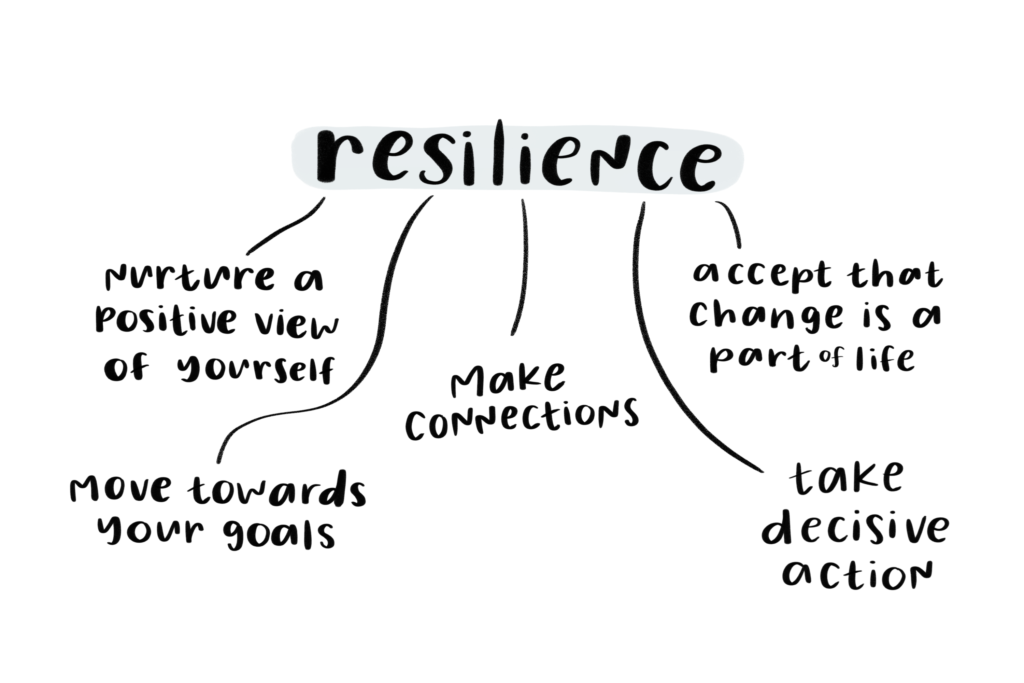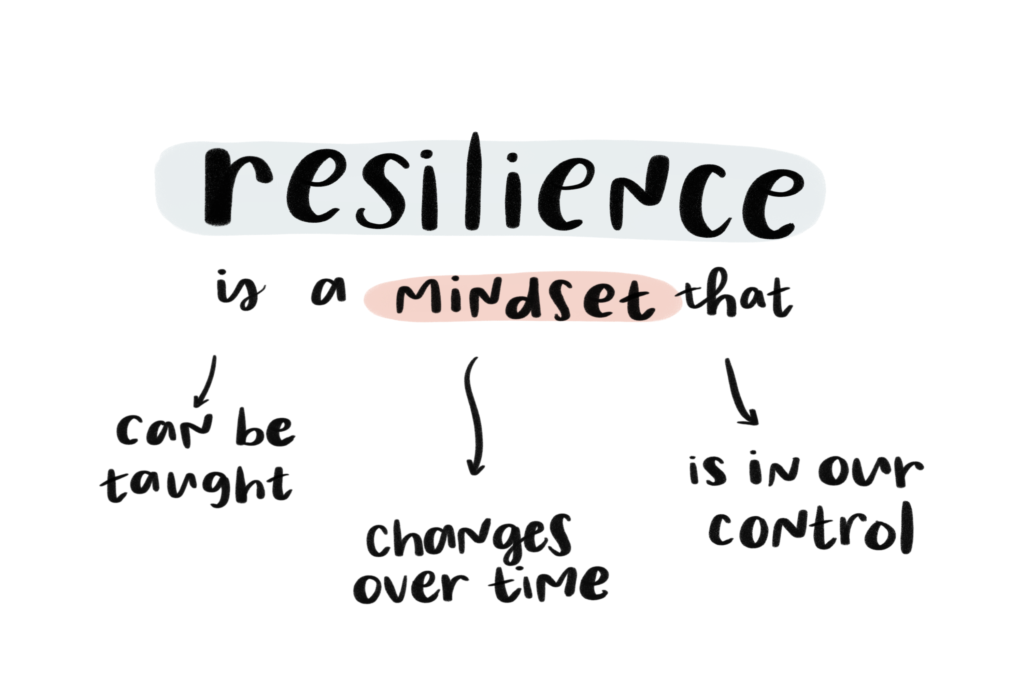The most successful people that you know all have one thing in common… FAILURE.
You weren’t expecting that one, were you? You see—the more I meet with thriving entrepreneurs across the country, the more I realize that overcoming failure is the critical part of succeeding that (quite frankly) we aren’t talking about.
It’s normal to see people at the heights of their careers showcasing their wins and awards, but rarely do we see the rocky road they traversed to get there. And the truth is that if we go into building a business without a clear understanding of the hardships—we are likely to get into the messy middle before we realize that our struggles are a normal part of the process.

This month, at the Showit United Conference—I spoke to a room of photographers about how to build resilience and the feedback I have been receiving ever since reminded me that not enough people are talking about the grit required to overcome adversity.
Failure can be a powerful launchpad for future growth… but only if combined with one key ingredient in the success equation: resilience.
So, I wanted to share a little peak into my talk with all of you and hand you five practical ways that you can apply to improve your mindset and build resilience heading into the future.

Let’s start with a definition brought to you by the American Psychological Association. Resilience is the process of adapting well in the face of adversity, trauma, or significant sources of stress.
5 Steps to Building Resilience
When I started doing research on building resilience in my own life, there is no surprise where I found myself… the American Psychological Association. I believe that the first step to changing our lives often begins by changing our mindset. So naturally, as a nerd… I headed straight to the source of truth on all things psychology.
It was then that I discovered that the APA has an amazing list of 10 Ways to Build Resilience that I simplified down to five core practices that I’m sharing with you today.

Overall, I believe that reaching your goals isn’t a matter of getting lucky or stumbling into success, but rather having the courage to lean into your failures and rise above the challenges on the horizon. Success requires resilience.
One: Nurture a positive view of yourself
What is the soundtrack like inside of your head? Do you concentrate on all of your weaknesses or do you affirm your strengths? Do you take time to truly care for your mind and body? Do you nurture a positive view of yourself?
Here are some simple ways to incorporate this practice into building resilience:
- Daily Affirmations
- Acknowledge your feelings and emotions
- Meditate, journal, and/or pray
- Exercise regularly
- Engage in activities that bring you joy
From the APA: “Taking care of yourself helps to keep your mind and body primed to deal with situations that require resilience.”
Two: Move toward your goals
How often do you set huge overarching goals without a plan to move forward and achieve them? I’m guilty of this and have learned that unless I break down my goals into bite-sized pieces… I stare at them and remain paralyzed, unable to move forward.
So here is my advice, and yes—it is backed by science.
Create simple processes that ignite the sensation of positive progression and thereby make it more likely for you to achieve your goals. (A simple to-do list for example!)
How does this work? When you believe that you are capable of achieving your goals and see yourself making forward progress, you are more likely to reach the finish line.
Start by asking yourself a simple question each morning:
What are three things I can accomplish today to move me towards my goals? These can be simple things (empty my inbox, journal for fifteen minutes, or schedule a doctor’s appointment) and by the simple act of doing them—you continue build your sense of self efficacy.
I make a short list every morning of the ‘top three’ things that I need to accomplish and ensure that the first item is a fairly easy one. Making that first check mark truly empowers me to move forward onto the following two… leading me closer to my overarching goal.
It sounds simple, but it truly works. The next time that you feel stuck or overwhelmed—try it.
Three: Take decisive actions
You know the scene from the Notebook where Noah is screaming at Allie by the car… “What do you want?” repeatedly and she shakes her head, unable to give him a clear answer, overwhelmed by the decision at hand.
Never have I related to scene more in my entire life. Whether it’s choosing what to eat for dinner, watch next on Netflix, or how to move my business forward—it can be hard to take decisive action.
The APA claims that acting decisively is a key skill on the road to resilience: “Act on adverse situations as much as you can. Take decisive actions, rather than detaching completely from problems and stresses and wishing they would just go away.”
In 1989 a developmental psychologist named Emmy Werner published the results of a thirty-two-year research project after following a group 698 children from before birth into their 30’s.
She found several psychological elements that ultimately predicted resilience and one of them was particularly relevant to the practice of taking decisive action.
From a young age, resilient children tended to “meet the world on their own terms” according to Doctor Werner.
These resilient children had what psychologists call an internal locus of control—essentially they believed that they, and not their circumstances, affected their achievements.
In other words: resilient children see themselves as the orchestrators of their own fates. They feel in control of how they interpret and respond to the events happening in their lives. (Read more about this study in The New Yorker)
The takeaway: As human beings and business owners, we cannot change many of the hardships that we face or stressful events that happen, however we can control how we respond to them.
Four: Accept that change is a part of living and be willing to innovate
I’m reminded of the simple prayer, “help me to accept the things I cannot change and the wisdom to know the difference” that my math teacher used to have us recite before class every morning in my Catholic High School. Those words have truly stuck with me over the years.
When you launch a business, there are going to be things that you truly cannot change—the market, new technology, economic downturns, just to name a few.
In order to prosper, you must understand the current market, solve their pain points, and innovate as changes approach on the horizon. Building resilience means not only accepting that change is a part of life (and business), but also means being willing to adapt.
Remember Blockbuster? (If you are too young to know what I’m talking about… don’t tell me that this reference makes me old, just keep scrolling.)
Blockbuster had the video rental market cornered until… Netflix. The market changed, technology improved, and a total industry disruption occurred.
If anyone should have led our world into mail-order rentals and eventually streaming services—it should have been Blockbuster. They were positioned to dominate the video rental space and now they have gone the way of the dinosaurs.
My take? It was a lack of acceptance that the world was changing and an unwillingness to innovate that put them out of business. They stuck to brick and mortar in a market that was moving towards personal, curated experiences and convenience delivered to doorsteps (and devices).
In the small business space, we are facing change every single day. The same factors that impacted a giant company like Blockbuster are also shifting the market for side hustlers and solopreneurs alike. We are not immune to technological advancements and consumer preferences.
The bottom line: when you accept that some circumstances cannot be changed, it enables you to concentrate on what you can alter, innovate, and improve.
Five: Make connections
This key pillar to building resilience is my favorite—connection. Surrounding yourself with encouraging, supportive, and empowering people can truly make all the difference.
I’ve experienced this in my own life countless times. While going through brain surgery, navigating infertility, and building a business—my community has carried me countless times.
The APA puts it simply: “Good relationships with close family members, friends or others are important. Accepting help and support from those who care about you and will listen to you strengthens resilience.”
From an early age, strong relationships help to instill resilience within us. I think back to my grandmother especially—she was a critical person in my life that encouraged me to persevere through difficult circumstances. There isn’t a day that goes by that I don’t think about how she empowered me to be fearless in the face of adversity. I owe much of who I am today to her courage and if you’ve ever heard me speak about my Mom-Mom… you know what I’m talking about.
But, don’t just take my word for it. According to Harvard’s Graduate School of Education: “When confronted with the fallout of childhood trauma, why do some children adapt and overcome, while others bear lifelong scars that flatten their potential? A growing body of evidence points to one common answer: Every child who winds up doing well has had at least one stable and committed relaÂtionship with a supportive adult.”
One relationship. It’s truly that simple. One strong and impactful relationship can be the difference between children that rise above their adversity and those that don’t.
Ask yourself: Who is currently speaking into your life? Have you carved out space to prioritize community and relationships in your business?
If the answer is yes—keep leaning in. If it’s no, I want to encourage you to consider joining a local meet-up, joining an industry Facebook Group, or even raising your hand to be a part of the community over competition movement alongside me.
You don’t have to do this alone.

In conclusion, remember that resilience is a mindset that can be taught, changes over time, and is in our control. Strengthening this skillset is a key way to overcome the hardships that lie along the journey of entrepreneurship.
Sources Cited:
- APA. “The Road to Resilience.” American Psychological Association, 2019. https://www.apa.org/helpcenter/road-resilience
- Konnikova, Maria. “How People Learn to Become Resilient.†The New Yorker, The New Yorker, 21 Feb. 2019, www.newyorker.com/science/maria-konnikova/the-secret-formula-for-resilience
- Walsh, Bari. “The Science of Resilience: Why Some Children can Thrive Despite Adversity.†Harvard Graduate School of Education, Harvard, 23 Mar. 2015, https://www.gse.harvard.edu/news/uk/15/03/science-resilience
Leave a Reply Cancel reply
© 2023 Natalie Franke
/
/
/
/
/
It is encouraging to know that resilience is a mindset that can be learnt and I have the power to control it.
I happily stumbled upon your blog b/c of my poor spelling skills. I searched how to spell “resilience” and your image of the 5 items popped up and resonated with me. I’m glad I found your page and look forward to diving in more. Thanks for posting this.
[…] Image source- Google by Natalie […]